 W
WThe 10 Downing Street Guard Chairs are two antique chairs. In the early 19th century, 10 Downing Street was guarded by two men who sat outside the building in leather chairs made by Thomas Chippendale. There was a drawer underneath the chair which was filled with hot coals to keep the guards warm whilst on duty. The chairs were made with a circular back and hood, both to shield the guards from bad weather and to improve the surrounding acoustics, thereby allowing the guard to hear better from a wider angle.
 W
WA cabriole leg is one of (usually) four vertical supports of a piece of furniture shaped in two curves; the upper arc is convex, while lower is concave; the upper curve always bows outward, while the lower curve bows inward; with the axes of the two curves in the same plane. This design was used by the ancient Chinese and Greeks, but emerged in Europe in the very early 18th century, when it was incorporated into the more curvilinear styles produced in France, England and Holland.
 W
WA chiffonier, also chiffonnier, may be used to describe at least two types of furniture. Its name comes directly from a French piece of furniture, the chiffonier. The French name, which comes from the French for a rag-picker, suggests that it was originally intended as a receptacle for odds and ends which had no place elsewhere.
 W
WElizabethan furniture is the form which the Renaissance took in England in furniture and general ornament, and in furniture it is as distinctive a form as its French and Italian counterparts.
 W
WA gateleg table is a type of furniture first introduced in England in the 16th century. The table top has a fixed section and one or two hinged leaves, which, when not in use, fold down below the fixed section to hang vertically.
 W
WThe Great Bed of Ware is an extremely large oak four poster bed, carved with marquetry, that was originally housed in the White Hart Inn in Ware, England. Built by Hertfordshire carpenter Jonas Fosbrooke about 1590, the bed measures 3.38m long and 3.26m wide and can 'reputedly... accommodate at least four couples'. Many of those who have used the bed have carved their names into its posts.
 W
WLoo table is a table model from the 18th and 19th centuries, originally designed for the card game loo, which was also known as lanterloo.
 W
WThe marriage bed of Henry VII was a bed designed and built for use on the night of his marriage to Elizabeth of York on 18 January 1486. The marriage symbolised the end of the War of the Roses by joining Henry's House of Lancaster to Elizabeth's House of York and the bed's design reflected this featuring both the White Rose of York and the Red Rose of Lancaster. A carving on the headboard depicted the Royal couple as either Adam and Eve or Christ and the Virgin Mary defeating the animals that opposed Christ in Psalm 91 and bringing paradise to England. The bed also includes the arms of France, reflecting Henry's possessions and ambitions there, as well as religious and fertility symbols.
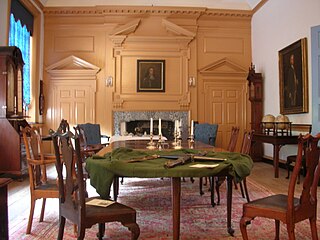 W
WThe Queen Anne style of furniture design developed before, during, and after the time of Queen Anne, who reigned from 1702 to 1714.
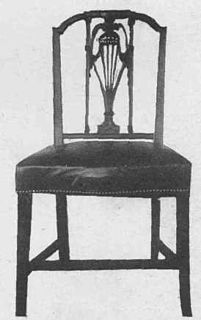 W
WSheraton is a late 18th-century neoclassical English furniture style, in vogue c. 1785–1820, that was coined by 19th century collectors and dealers to credit furniture designer Thomas Sheraton, born in Stockton-on-Tees, England in 1751 and whose books, "The Cabinet Dictionary" (1803) of engraved designs and the "Cabinet Maker's & Upholsterer's Drawing Book" (1791) of furniture patterns exemplify this style.
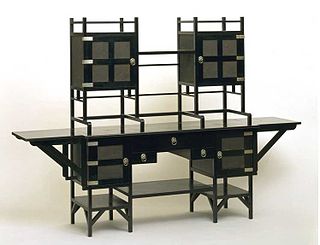 W
WThis sideboard was designed by Edward William Godwin (1833–86), who was one of the most important exponents of Victorian Japonisme or Anglo-Japanese style, the appropriation of Japanese artistic styles.
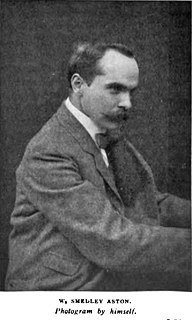 W
WWilliam Smedley-Aston (1868–1941) was with his wife Irene a Victorian Pre-Raphaelite Arts & Crafts photographer and member of the Birmingham Group of artists and the Linked Ring Brotherhood. He was also known as W. S. Aston or W. Smedley.
 W
WVictorian decorative arts refers to the style of decorative arts during the Victorian era. Victorian design is widely viewed as having indulged in a grand excess of ornament. The Victorian era is known for its interpretation and eclectic revival of historic styles mixed with the introduction of middle east and Asian influences in furniture, fittings, and interior decoration. The Arts and Crafts movement, the aesthetic movement, Anglo-Japanese style, and Art Nouveau style have their beginnings in the late Victorian era and gothic period.
 W
WA what-not is a piece of furniture derived from the French étagère, which was exceedingly popular in England in the first three-quarters of the 19th century. It usually consists of slender uprights or pillars, supporting a series of shelves for holding china, ornaments, trifles, or "what not", hence the allusive name. In its English form, it is a convenient piece of drawing room furniture, and was rarely valued for its aesthetic.
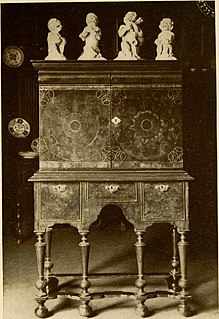 W
WWhat later came to be known as the William and Mary style is a furniture design common from 1700 to 1725 in the Netherlands, the Kingdom of England, the Kingdom of Scotland, and later, in England's American colonies. It was a transitional style between Mannerist furniture and Queen Anne furniture. Sturdy, emphasizing both straight lines and curves, and featuring elaborate carving and woodturning, the style was one of the first to imitate Asian design elements such as japanning.